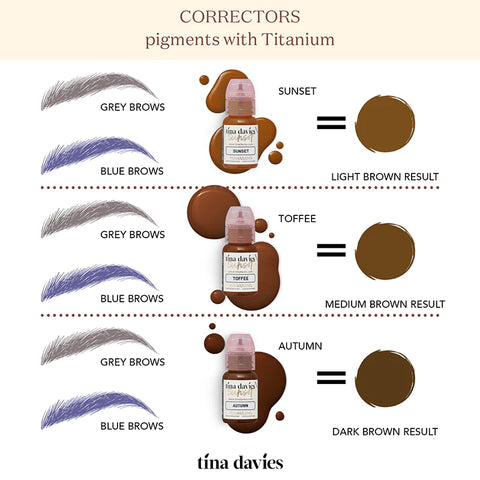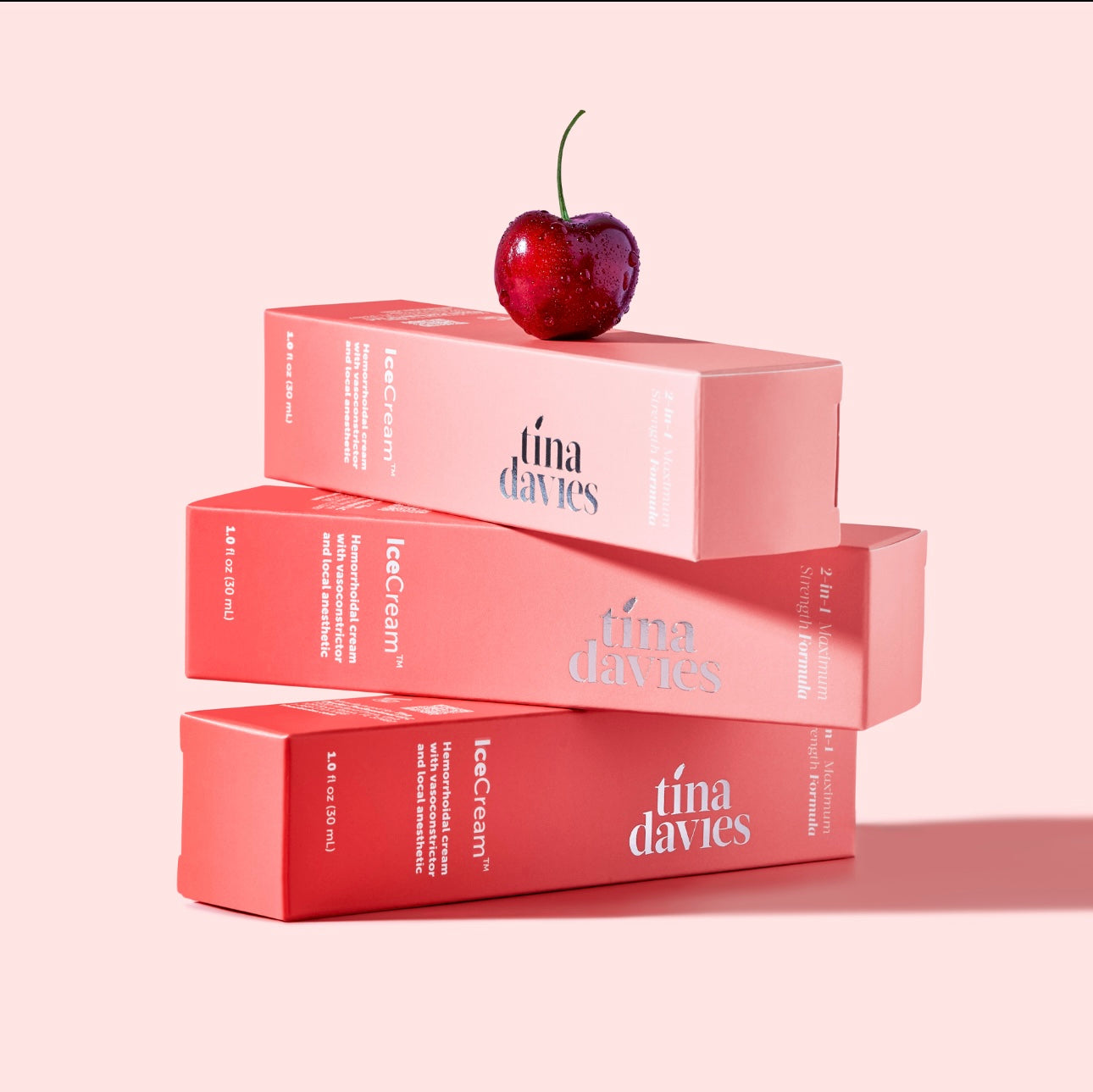I’m so incredibly proud of the leaps and bounds the PMU industry has made in the past few years. With better products and education, our little “cottage industry” has exploded. We’ve come a long way baby! But rapid growth can come along with a lot of noise and confusion at the same time, especially when education and training are not standardized in our highly technical field.
In this blog post, I want to highlight and share the areas where we could improve for the betterment of our industry and clients. I’ve personally made these same mistakes before and my goal is to share with you my experience so you can make better decisions.
Here are some common mistakes that artists make when it comes to pigment selection for brows:
1. Not understanding the ingredients of the pigments you are using and why you are using them.
Do you know why you’re using a specific pigment line? Is it because someone recommended them or because you saw pictures of how they look? Do you know the difference between organic, inorganic and hybrid pigment lines? Which pigments are a blend of both organic and inorganic pigments?

It wasn’t until recently that pigment manufacturers pulled back the curtains behind their manufacturing philosophies and pigment color formulations, so artists could take a deeper dive into what’s in their pigment bottles and how it can affect their work.
By reviewing the CI (Color Index) codes found in the MSDS sheets or on the label of a pigment bottle, you’ll be able to uncover what actual pigment colors make up your bottle of pigment. This will help you understand the behavior of the organic and inorganic ingredients and how they perform in the skin. Look for CI numbers or general color names such as Yellow 14, Red 254 etc.

Here’s a helpful chart that breaks down the difference between organic/hybrid and inorganic/iron oxide pigment lines:

All Perma Blend pigments including Tina Davies are a blend of both organic and inorganic pigments and are identified as an “organic/hybrid” pigment line. In PMU lingo, they are often referred to as “organic” since organic pigments are present in the formula.
COMPOSITION
Organic/hybrid pigments contain both carbon pigments and mineral pigments. They are typically soluble and dissolve easily in water. Inorganic/iron oxide pigments are derived from mineral and salt compounds and are insoluble, separating in water.
INTENSITY OF THE PIGMENT COLOR
Organic/hybrid pigments have a very bright color/hue intensity whereas inorganic/iron oxide pigments are more earthy and muted.
PARTICLE SIZE
Organic/hybrid pigments contain carbon CI’s which are smaller, reflect more light, and are more transparent. Inorganic/iron oxide pigments have a larger particle size, reflect less light, and are not transparent. Despite carbon black being an inorganic, it has the smallest molecule size out of organic and inorganic pigments.
PIGMENT DEPOSIT INTO THE SKIN
Organic/hybrid pigments have smaller particle sizes and are much easier to implant into the skin. Inorganic pigments have larger particle sizes and are harder to implant into the skin.
OPACITY
Organic/hybrid pigments can be highly transparent depending on the amount of white and black CI’s whereas inorganic pigments are more opaque.
LONGEVITY
Organic/hybrid pigments will last for years and are considered “forever pigments” with little fading out. Inorganic/iron oxide pigments are much more forgiving and will fade out rapidly within 1-2 years.
EFFECTS OF FADING & MAINTENANCE FREQUENCY
Organic/hybrid pigment formulations that contain carbon black can look cool/ashy/grey after 2-3 years and will need to be "warmed-up" to shift the color back to a neutral hue/color. This can happen because the organic pigment ingredients such as red and yellow fade, leaving behind carbon black and white. Inorganic/iron oxide pigments can look very faded with an orange/red residual after approximately 1.5 years and will need to be “cooled-down” to shift the color back to a neutral hue/color. This can happen because as iron oxide black fades, it can leave behind the red and yellow inorganic/iron oxide pigments.
Based on your client’s goal and the type of results and longevity that you want to deliver, you’ll need to choose your pigments carefully so you can meet their expectations.
Some artists may choose a hybrid pigment (a blend of organic and inorganic pigments) so they last a long time and require less maintenance and touch ups.
Other artists and clients may choose an inorganic/iron oxide pigment if their clients want less commitment and more flexibility with the design and color. It really depends on your client’s needs, your maintenance policy, and variables of the skin such as texture, undertones, and previous PMU.

2. Not understanding how much to saturate the skin when using different pigments.
Regardless if your client wants “soft and natural” or “defined and bold” brows, knowing how much saturation actually meets both yours and their expectation can be so difficult to discern because you won’t see the results of your pigment deposit until AFTER the skin heals in 30-40 days.
However, the basic guidelines are: organic/hybrid pigment lines such as Perma Blend, including Tina Davies will deposit into the skin easier and stay around much longer with little to no fading. They are less forgiving and almost “forever” lasting. Therefore, it is imperative that you DO NOT OVERSATURATE when working with organic/hybrid pigments to give yourself room to add more color definition in the future if needed. You’ll really need to focus on giving the brows an “airy” look, ideally with skin showing to create negative space and dimension. Good ways to control pigment saturation are through techniques such as layering and pigment diluting (shading solutions) in an effort to build definition without dense saturation. After all, the look of brows should resemble powder, not solid ink.
Since organic/hybrid pigments contain organic pigment molecules, they will implant into the skin quicker and easier than inorganic pigment lines. This means, that when using organic/hybrid pigments, you can saturate the skin very easily with fewer passes. If you're a newer artist, take care not to oversaturate the skin when using organic/hybrid pigments as the healed results will last a long time. Go slow and use a light hand, and stop tattooing when you reach a “powdery” saturation level.
Inorganic/iron oxide pigment lines are harder to implant into the skin, require more saturation to yield their intended outcome, and fade much quicker in the skin with longevity of approximately 1-2 years. Due to this, they are considered “more forgiving” with less permanence. When working with these pigments, expect to see a greater loss of saturation after healing.
Since inorganic/iron oxide pigments have larger pigment molecules, they will be harder to implant into the skin and require more pressure and layers of saturation. You’ll need to work with them very patiently. Also, you will likely need to perform a touch-up treatment within 2 months to add more color to reach optimal healed results/saturation for your client.
Pro Tip: To summarize, when working with organic/hybrid pigments, don't oversaturate and aim for a 'soft and airy' deposit. Stop tattooing when you see the intended outcome that resembles a healed result. When working with inorganic pigments, you will need to apply more layers to saturate and more treatments to reach optimal saturation.

The “airy look” of healed Ombre brows by @oliwia_magdalena_pmu

The “airy look” on a practice pad

Immediately after: over saturated brows using a hybrid pigment line

3. Not knowing how to perform maintenance on client’s brows over time.
Once you understand the basic principle of saturation, you'll be confident in providing your clients with permanent eyebrows that will suit their needs and meet their expectations. With a proper maintenance protocol, you can be their trusted artist to keep them looking fantastic for life, not to mention built-in loyalty that will provide you with recurring revenue for years to come.
During consultation be sure to explain to your client that their brows will need to be maintained for optimal beauty down the road, just like other beauty services such as hair or nails. Colors will start to fade and the shape may require updating.
Be sure to book this appointment before your client leaves your office and offer an incentive if needed to get it secured. This also reinforces your professionalism and dedication to client care.
Here’s a helpful chart that breaks down the WHAT, WHEN, and HOW of PMU brow maintenance:

TIMING
Brows done with organic/hybrid pigments should be maintained every 2-3 years to check for fading and shape updates. Brows done with inorganic/iron oxide pigments should be maintained every 12-18 months as the color will be very faded within this time range.
WHAT TO EXPECT WITH FADING
Brows done with organic/hybrid pigments are extremely long-lasting but tend to “dull” and look cooler over time. They may require a warm (orange or yellow based pigment) color boost to bring warmth back to the area. A warm color boost will brighten and warm the brows without making them darker and more saturated. A common mistake is using a dark, cool pigment without a warm undertone - this can lead to more coolness down the road. Based on my professional experience, brows done with inorganic/iron oxide pigments can fade by 50-70% so you may need to color correct the residual color before proceeding with the target color of your choice.
RESIDUAL COLORS
Brows done with organic/hybrid pigments will have a residual undertone of cool/ash due to the presence of carbon black and titanium dioxide white. Brows done with inorganic/iron oxide pigments can have a residual undertone of either red/orange or cool/ash as the iron oxide black breaks down.
WHAT TYPE OF PIGMENT TO USE
Brows done with organic/hybrid pigments will require the use of organic/hybrid pigments again for staying power and coverage. Brows done with inorganic/iron oxide pigments can be redone again with an organic/hybrid or inorganic/iron oxide pigments again depending on the client's goal. At this point, the client may want to continue with inorganic/iron oxide pigments for more flexibility and fading or move to organic/hybrid pigments for more longevity and commitment.
WHAT TO DO IF THE BROWS ARE TOO SATURATED
When the brows are too saturated, dense or flat, the best approach is either laser tattoo removal or saline removal as the current state of the tattoo is too prominent and the design cannot be improved without removal of some or all of the current eyebrow tattoo. Most clients do not want to go down this route but it’s often the best approach for the best long term results. As long as the pigment is lifted by approximately 50%, it will look so much better already and may be enough to work from! To get to this level, it may require a few sessions of laser or saline removal.
4. Not knowing what corrective colors to use during maintenance/touchups.
In the world of PMU, you will come across cases of faded red, orange, purple, magenta, grey, blue and green eyebrows. What you’re seeing is the previous pigment colors degrading in the skin at uneven rates. In order to be a well-rounded artist, you will need to learn how to correct these issues.
For best results, brows done with organic/hybrid pigments will require “warming up” with warm-based organic/hybrid pigments (think orange, yellow or reds with a yellow bias) again as this will have the maximum effect and staying power to combat the grey/ash undertone. Brows done with inorganic/iron oxide pigments will have a residual undertone of cool/ash or red/orange and can be redone again with an organic/hybrid or inorganic/iron oxide pigments depending on the client’s goal.
Pigments that contain titanium dioxide white are known as “correctors” will provide warmth and opacity. Pigments that do not contain titanium dioxide white are known as “toners” and will provide warmth and transparency. Choosing between a toner vs. corrector will depend if your goal is a sheer or more opaque coverage, similar to choosing between a transparent vs. opaque foundation. For example, if a client has faded grey eyebrows and wants medium brown eyebrows as the final results, I suggest the use of a warm toner (without white) to warm the existing grey eyebrows rather than using a warm corrector that contains white as the white in the pigment will “lighten” the intensity of the end results and be lighter than the client’s expectation.
The choice depends on the amount of coverage needed and you will need to trial both toners and correctors to see how they heal in the skin within various touch-up scenarios.
Here are some of our most loved popular toners and correctors:
Permablend Toners.

Evenflo Toner Correctors

The Tina Davies Sunset Collection, featuring Sunset, Toffee and Autumn can be used as warm correctors that will provide varying degrees of warmth and coverage as indicated below.

Correctors with Titanium

The Tina Davies Sunset Collection, featuring Sunset, Toffee and Autumn can be used as warm correctors that will provide varying degrees of warmth and coverage as indicated below.

IMPORTANT REMINDERS
In any PMU procedure, knowing the type of pigment line you are using and how to use it based on the way it behaves is a CRITICAL part of creating beautiful outcomes for your clients for years to come.
You will need to consider all the listed factors and your service promise to optimize what is best for you and your clients. For example, if you want to offer more flexibility coupled with less commitment and more maintenance, you may opt for inorganic pigments. If you want to offer more permanence/commitment coupled with less maintenance, you may opt for hybrid pigments. It will take you about 2-3 touch up cycles to get to know how different these two types of pigments perform over time in order to apply your learnings to suit your business and each client’s needs. There is no perfect pigment or product, rather, what suits you and your clients the best!






1 comment
This article is so biased lol. There’s a lot of untrue things so that you can sell your product